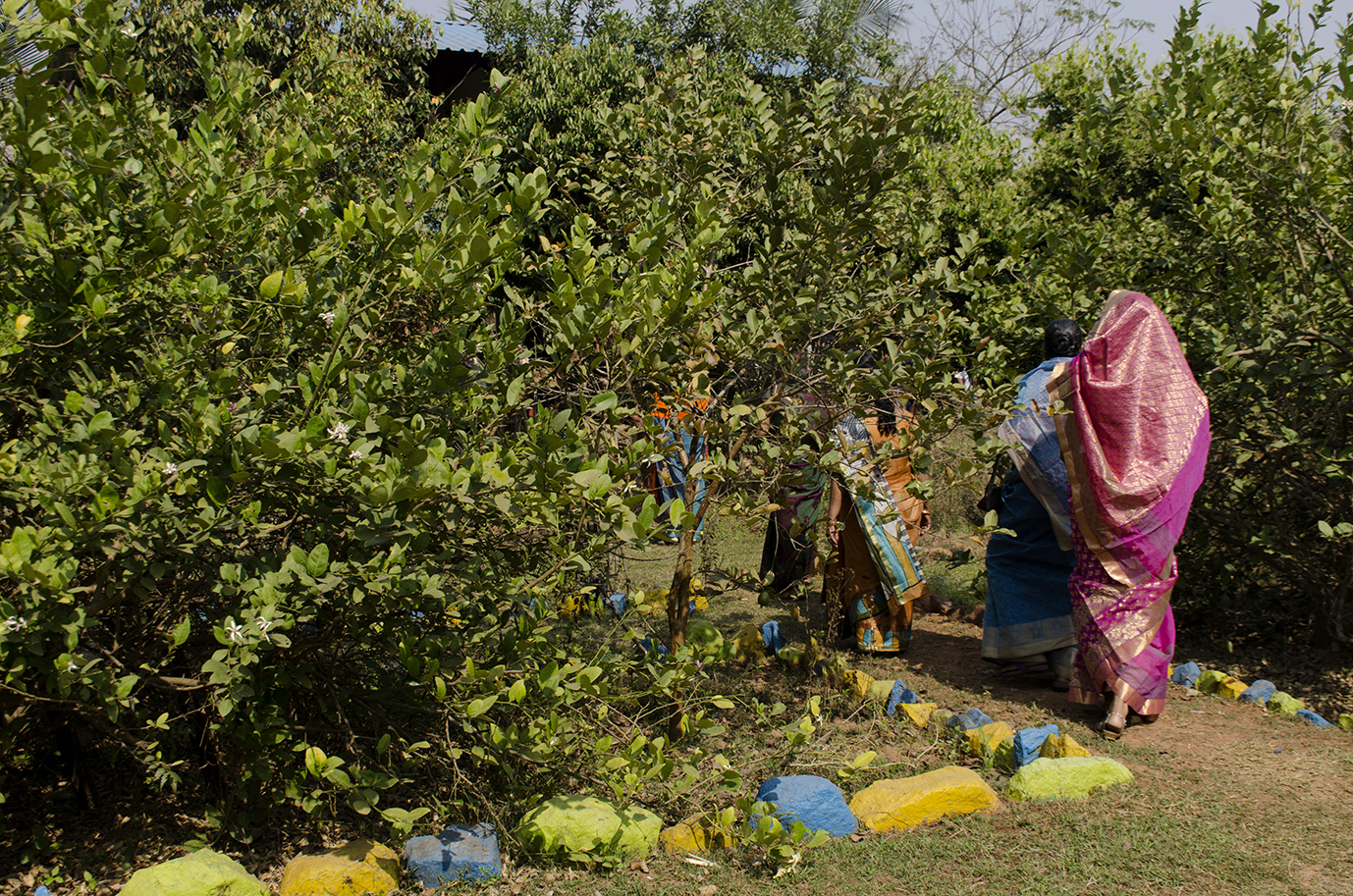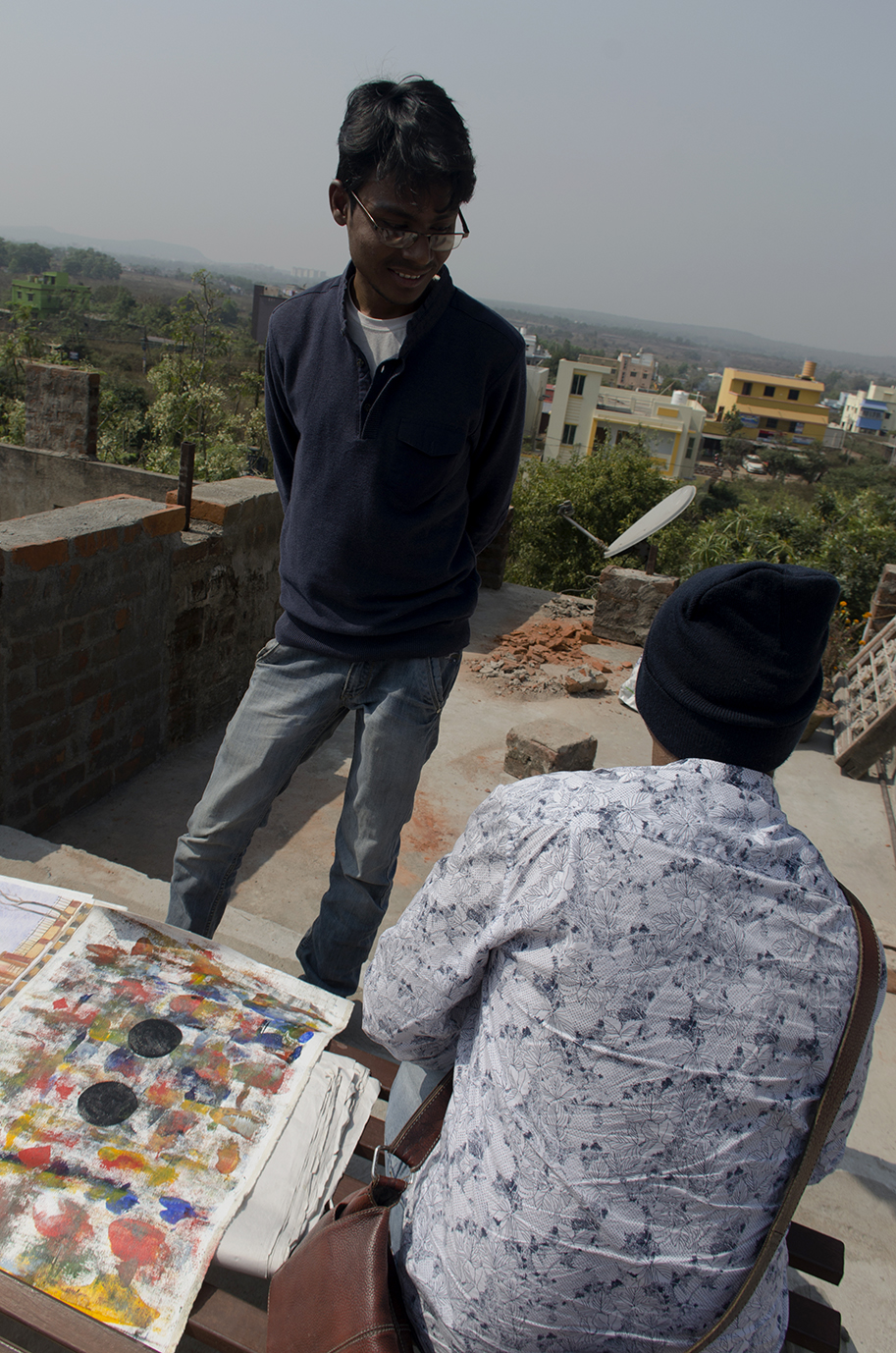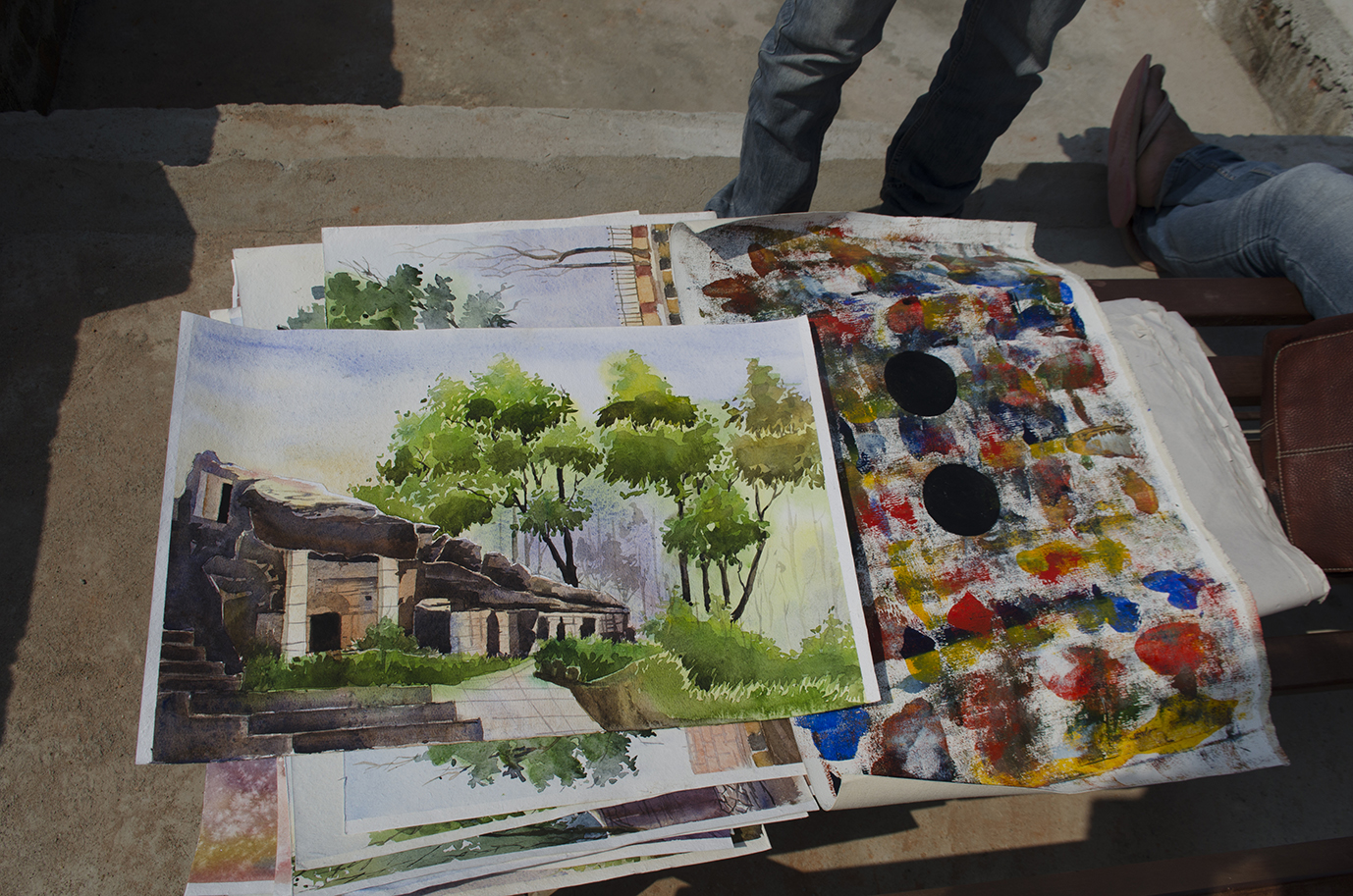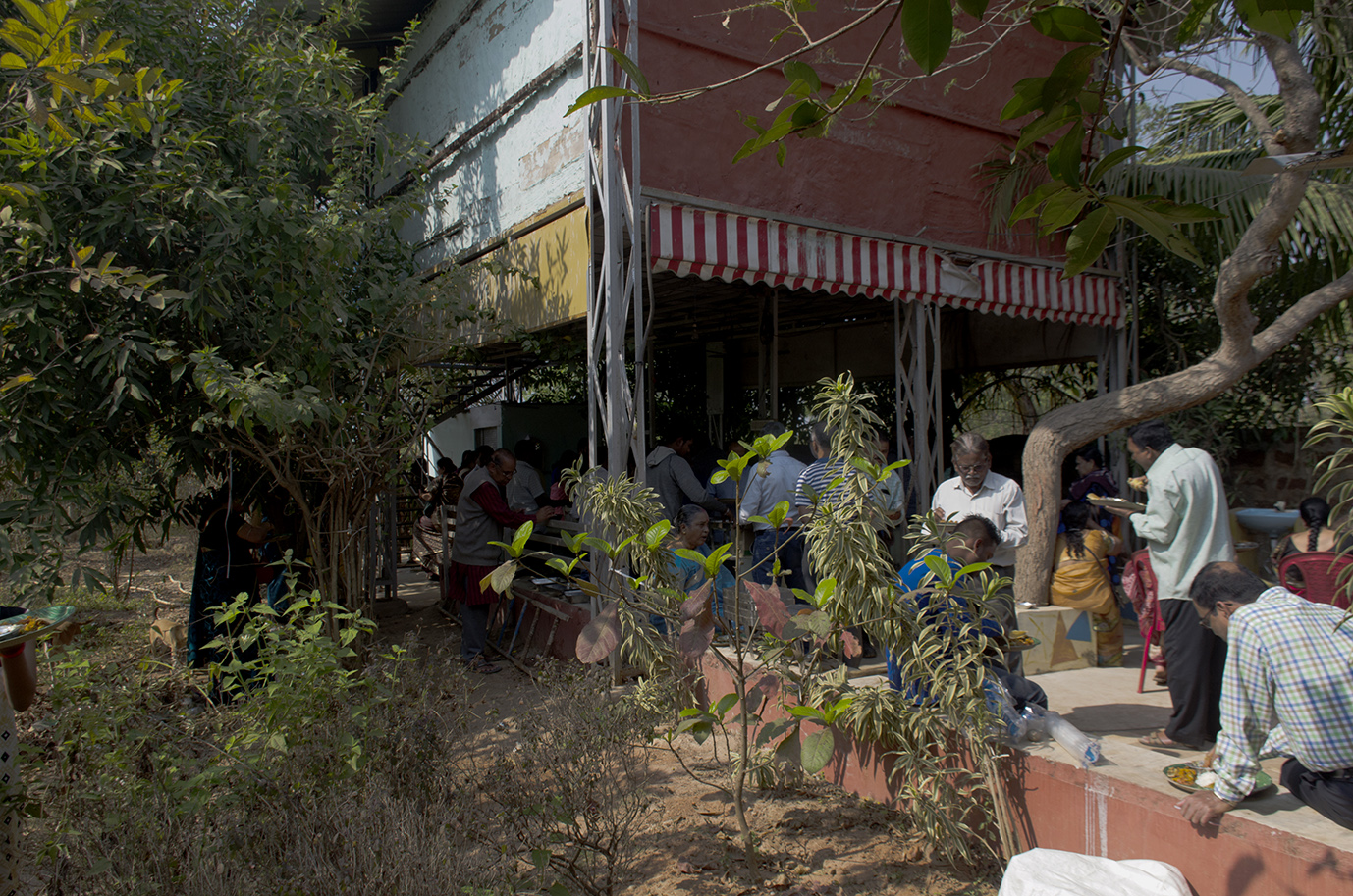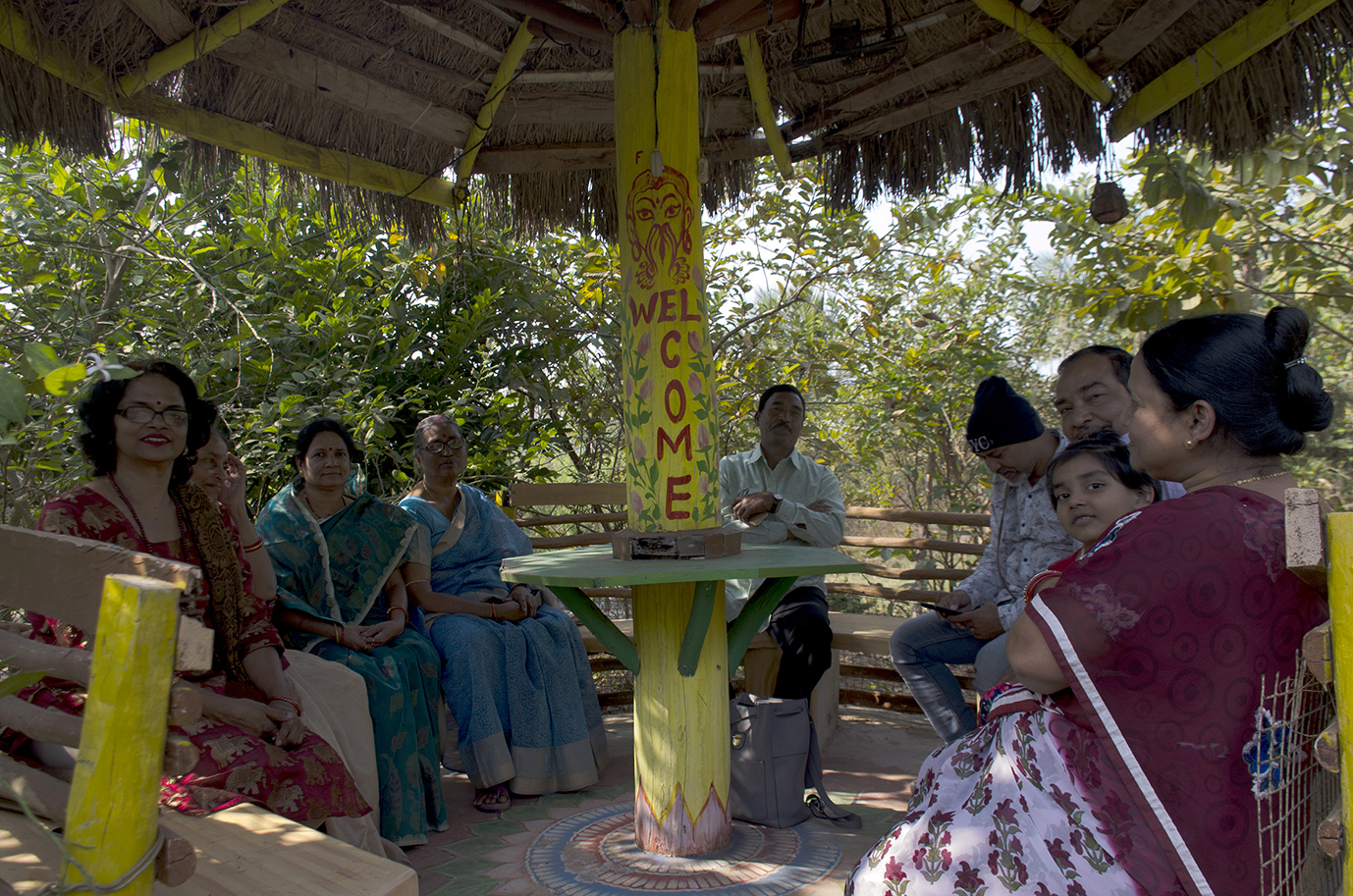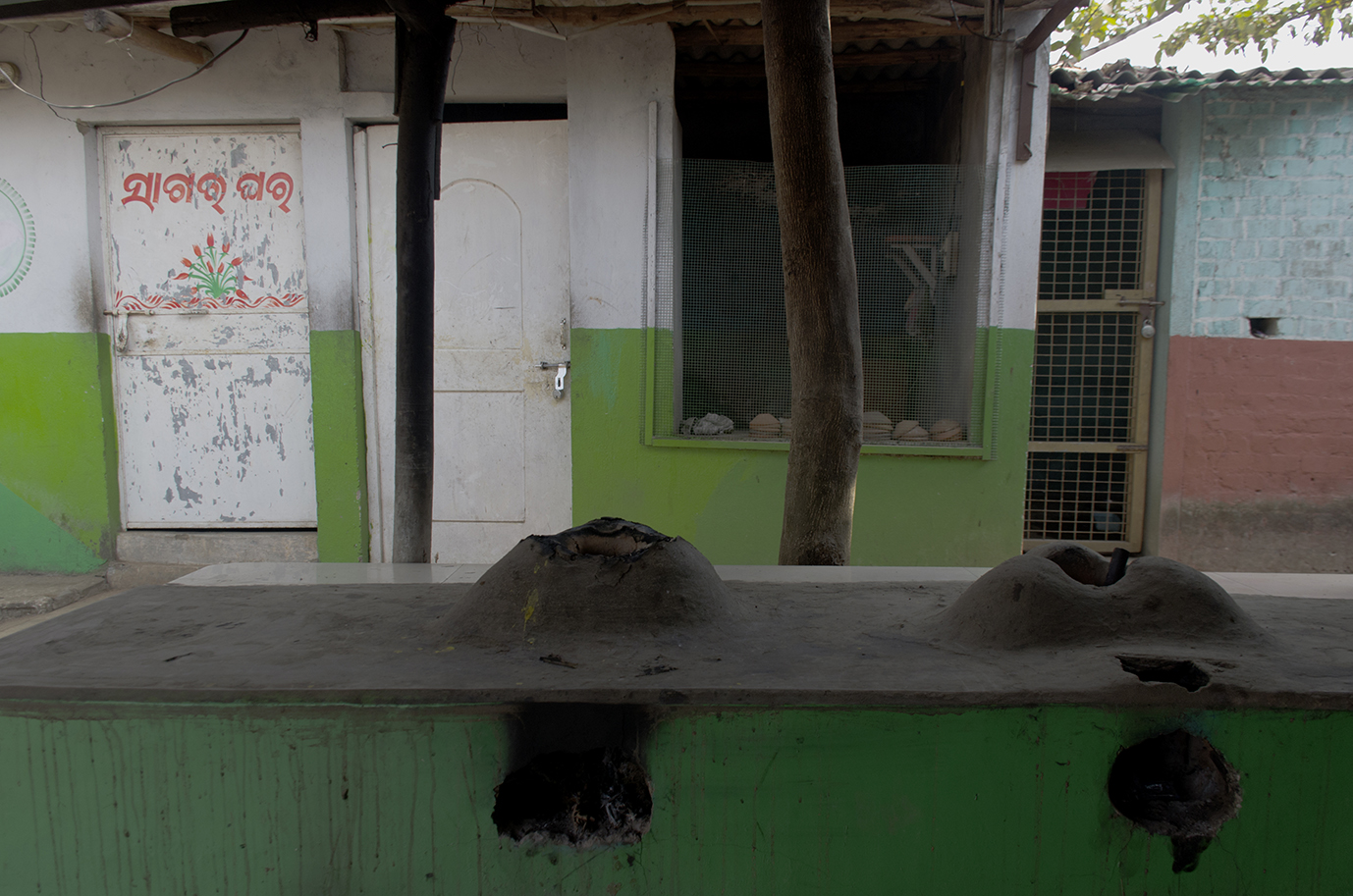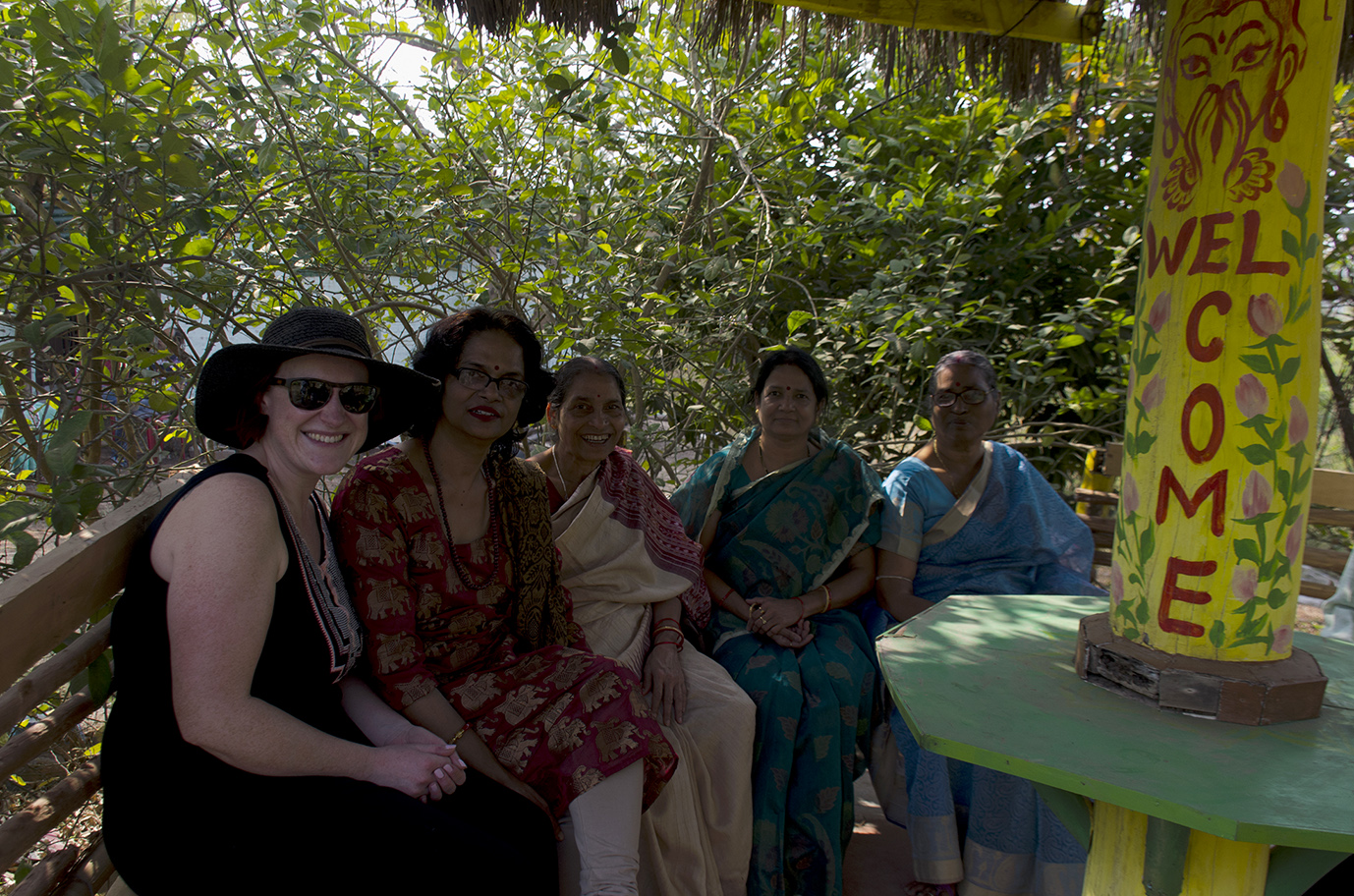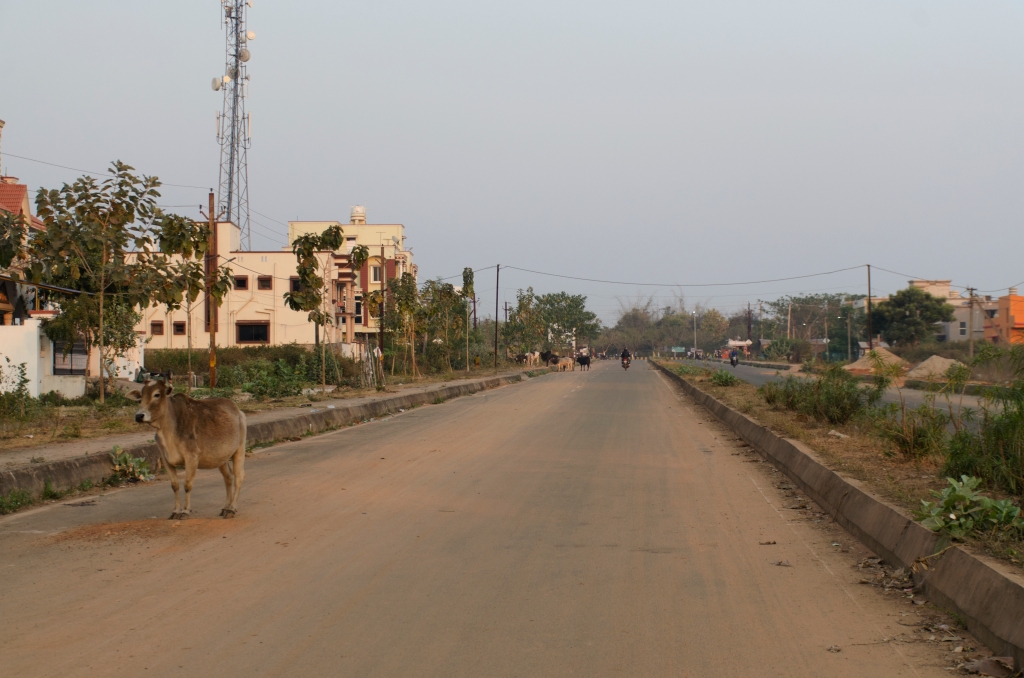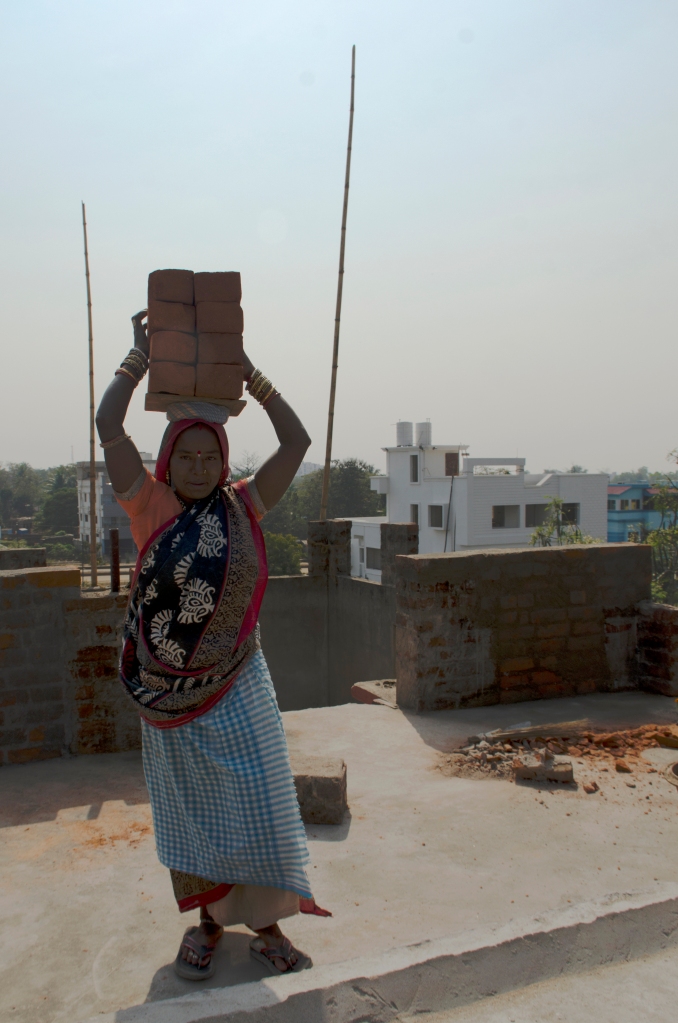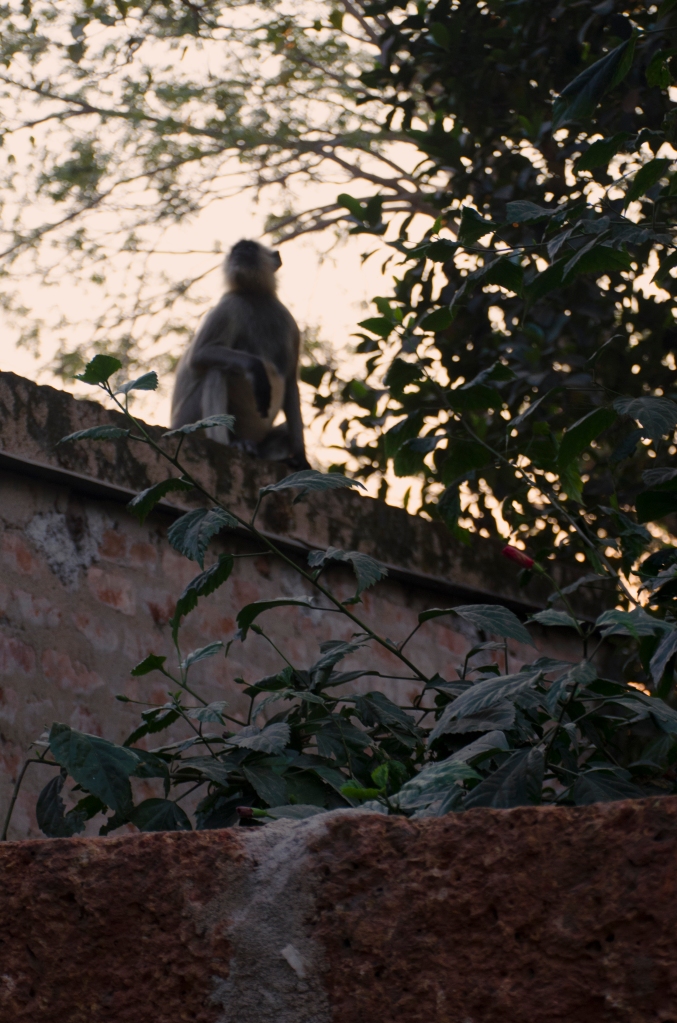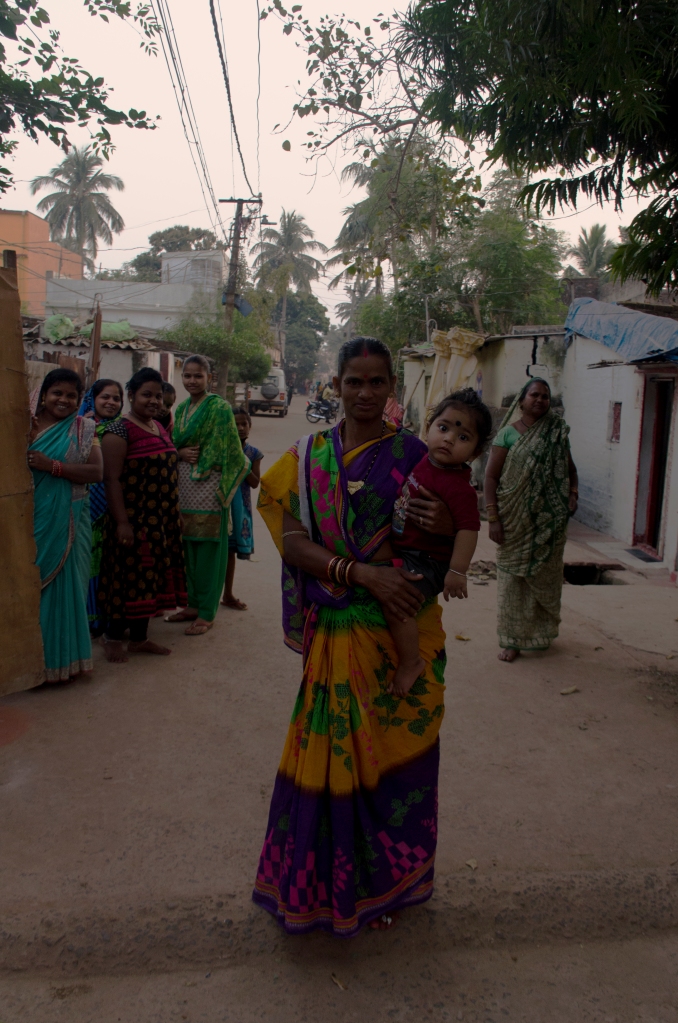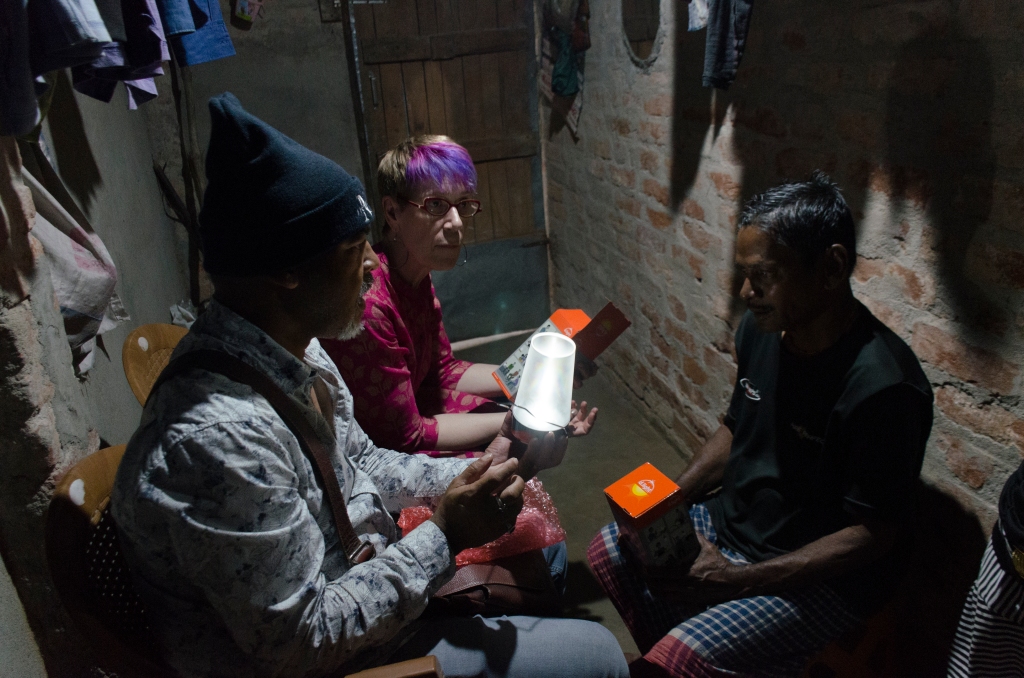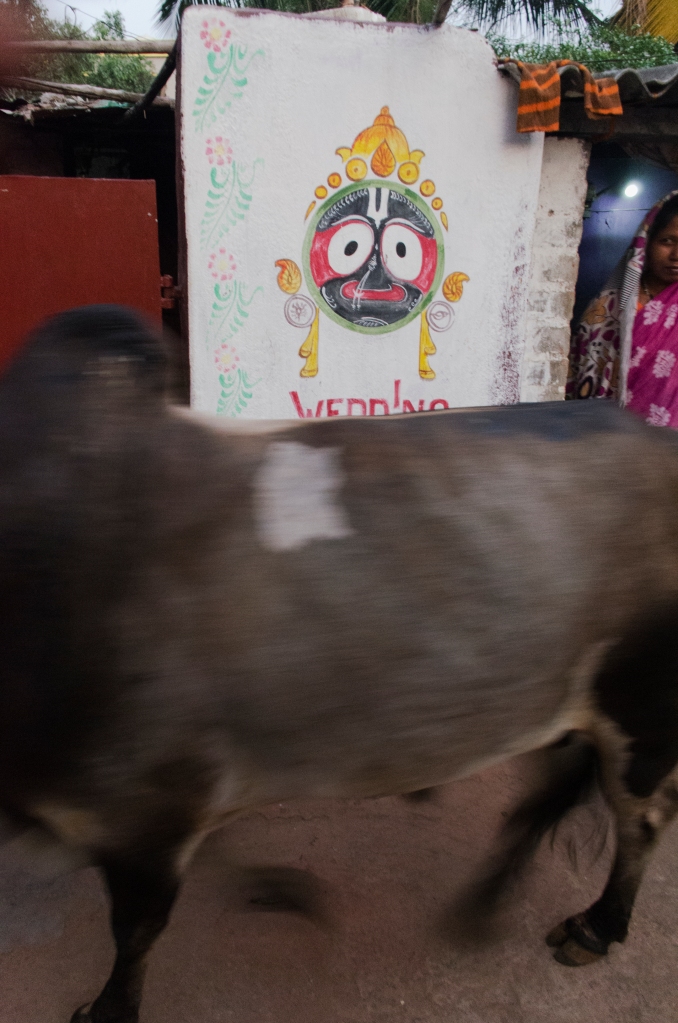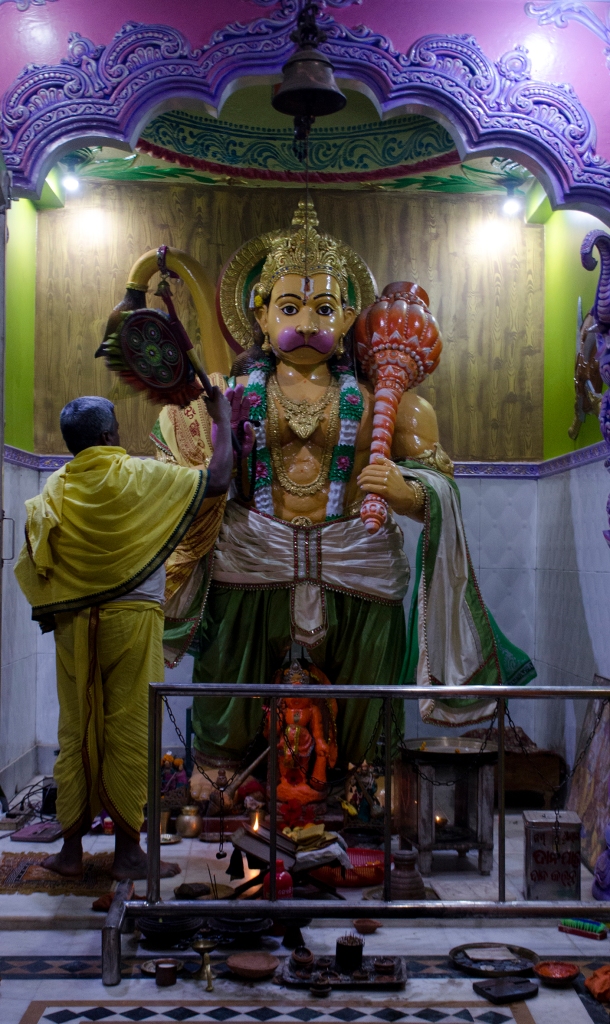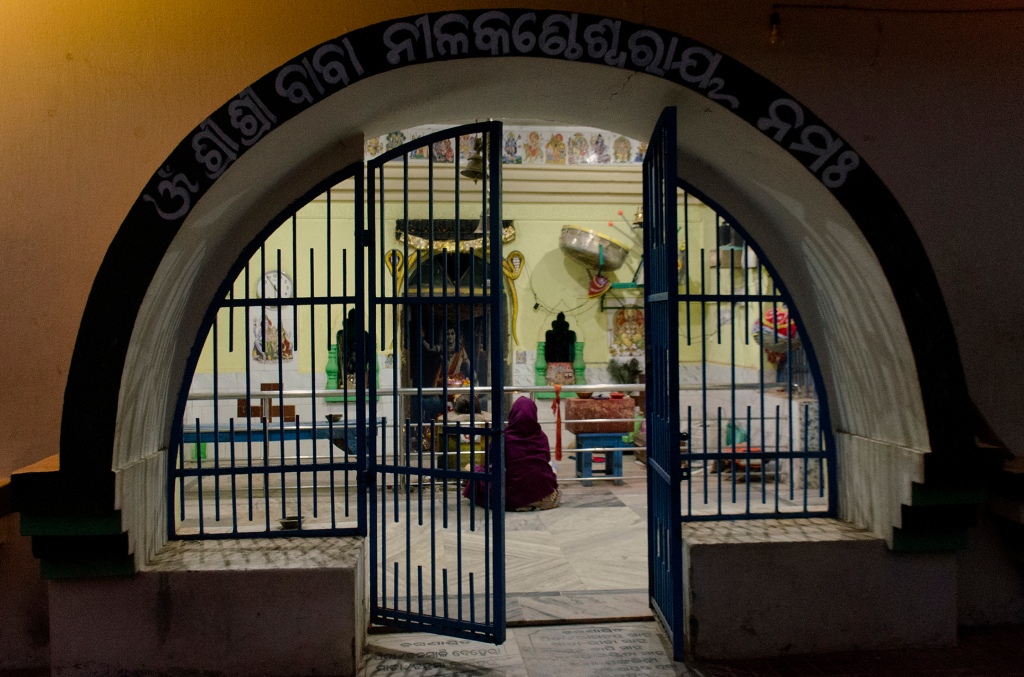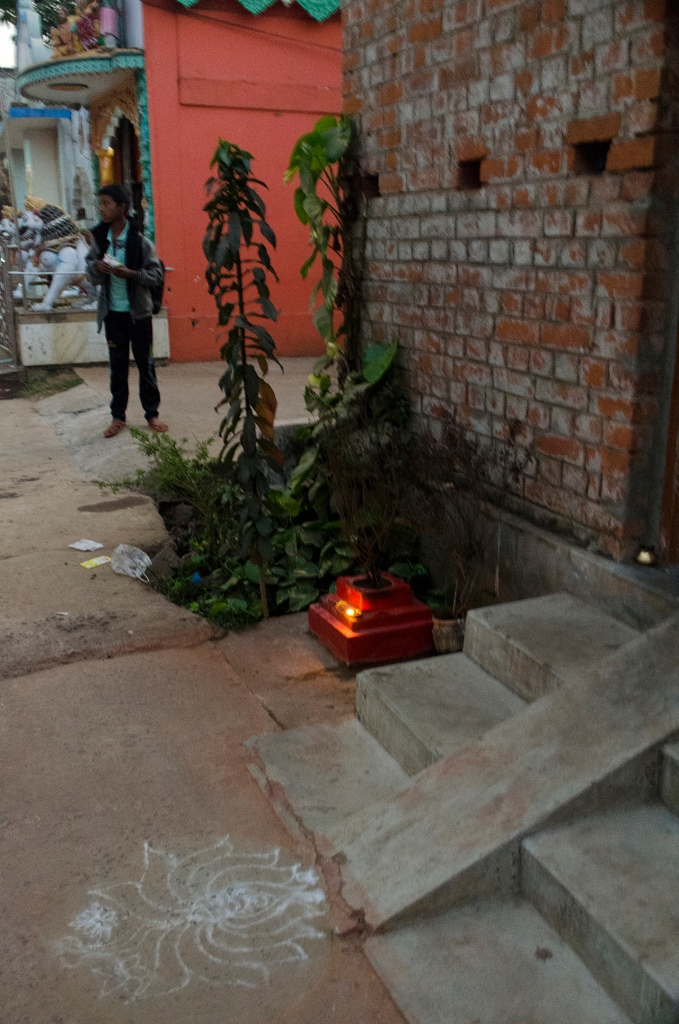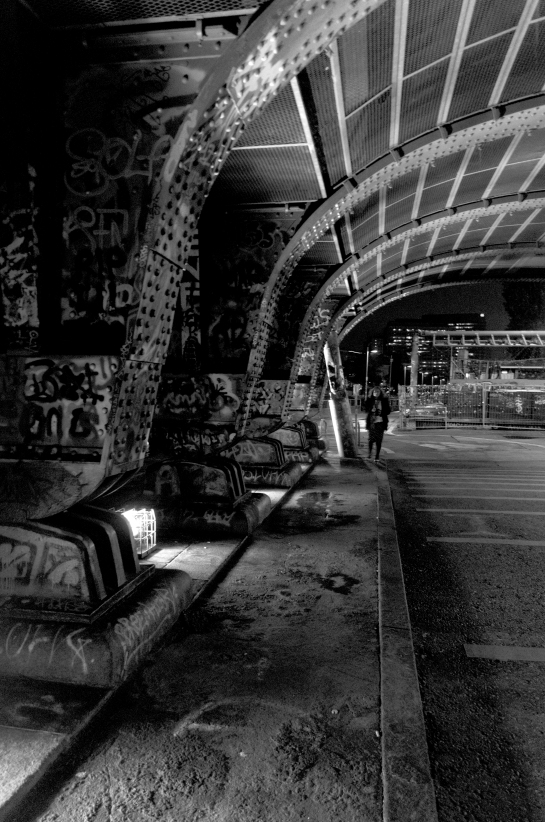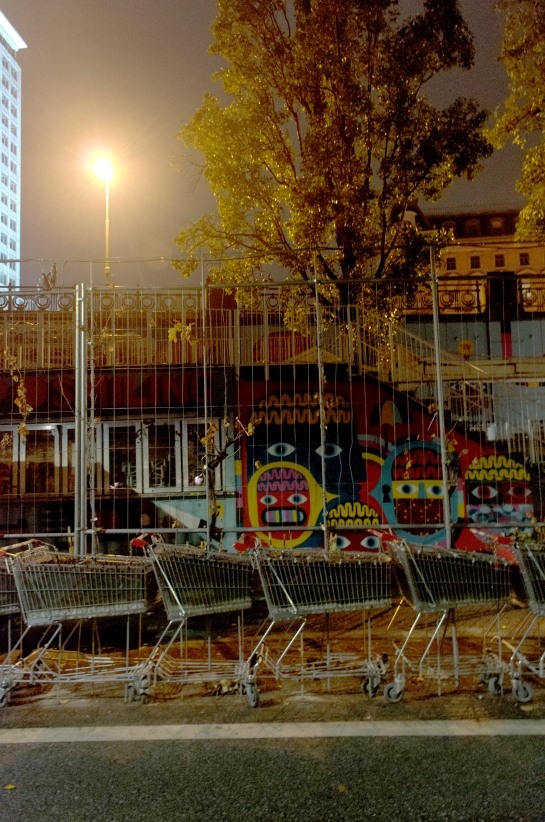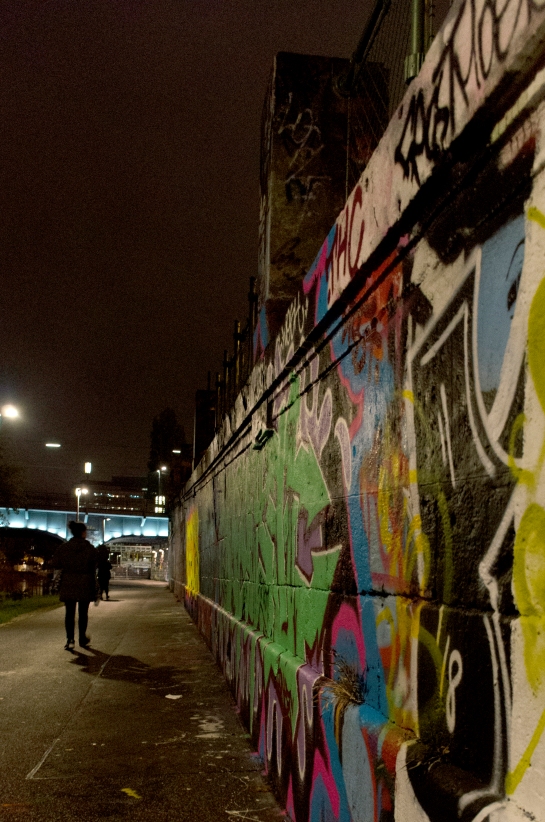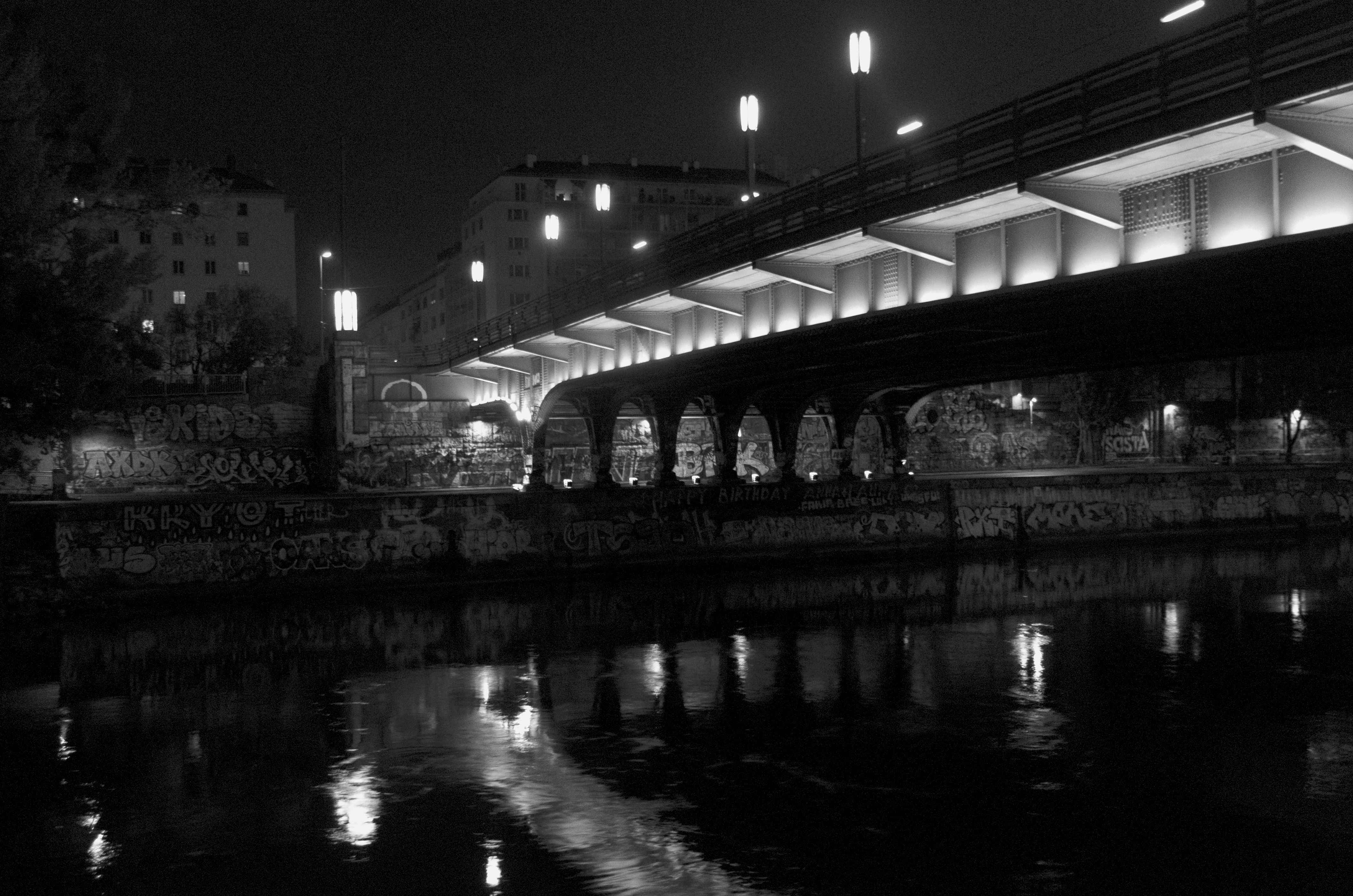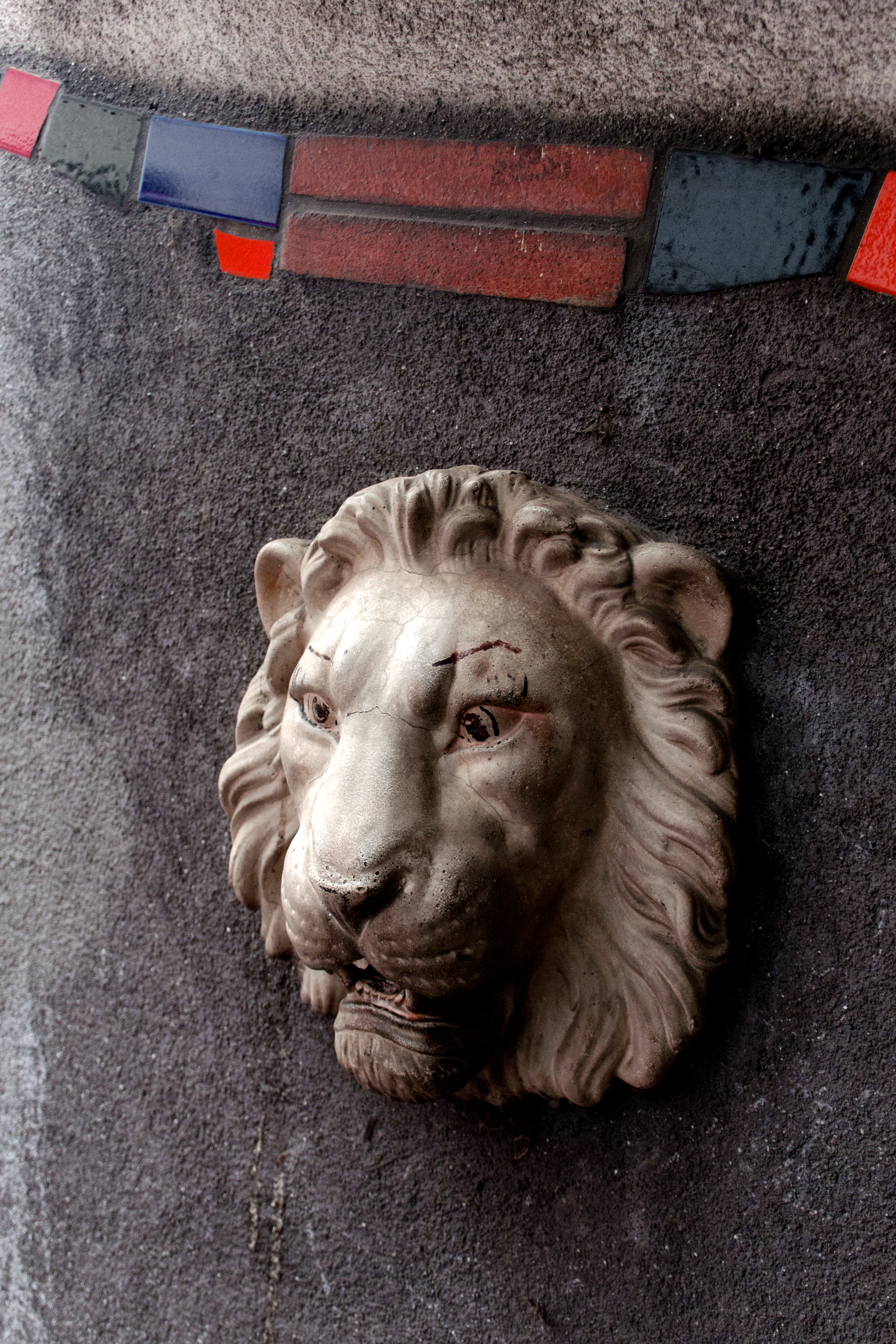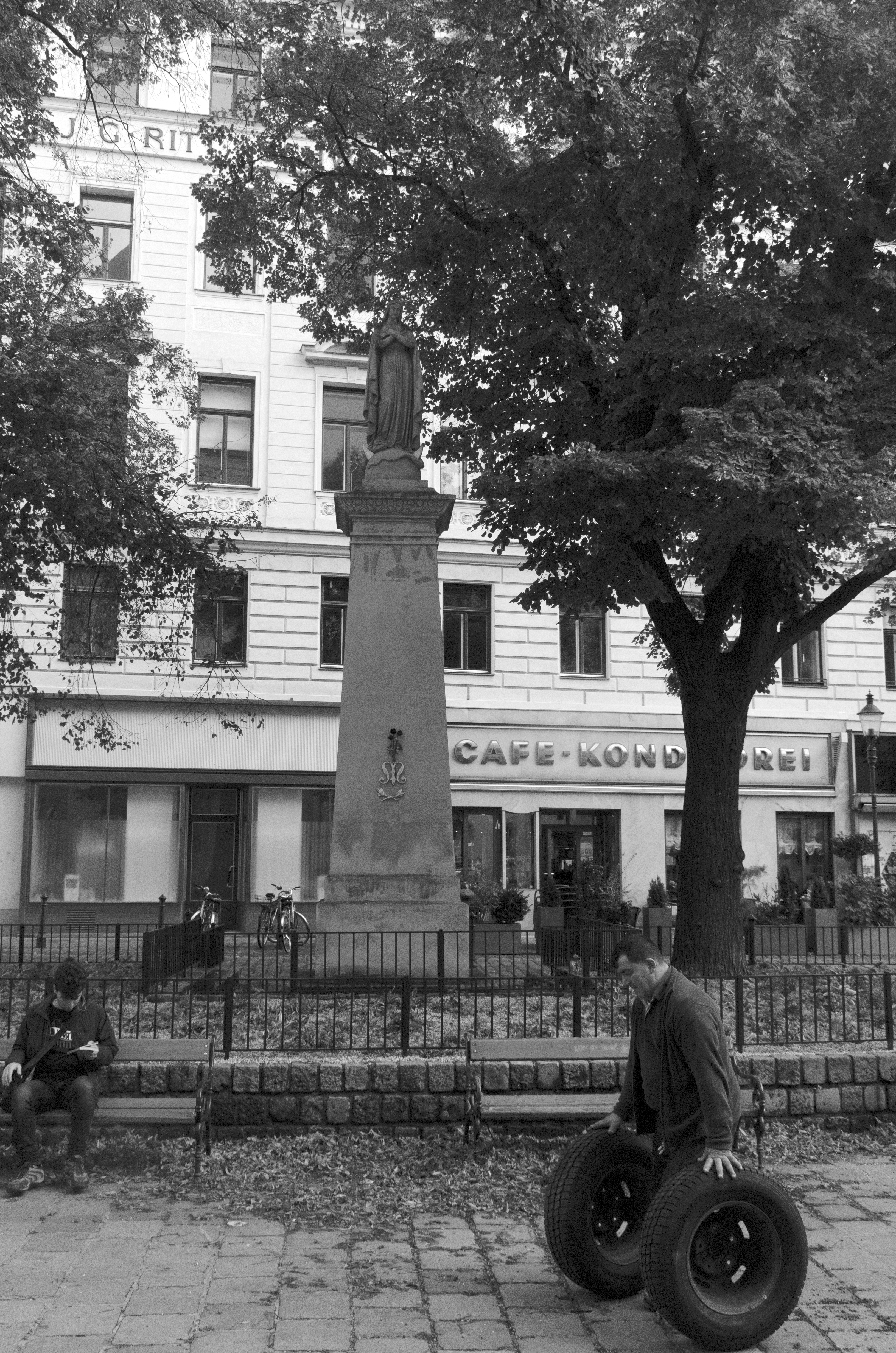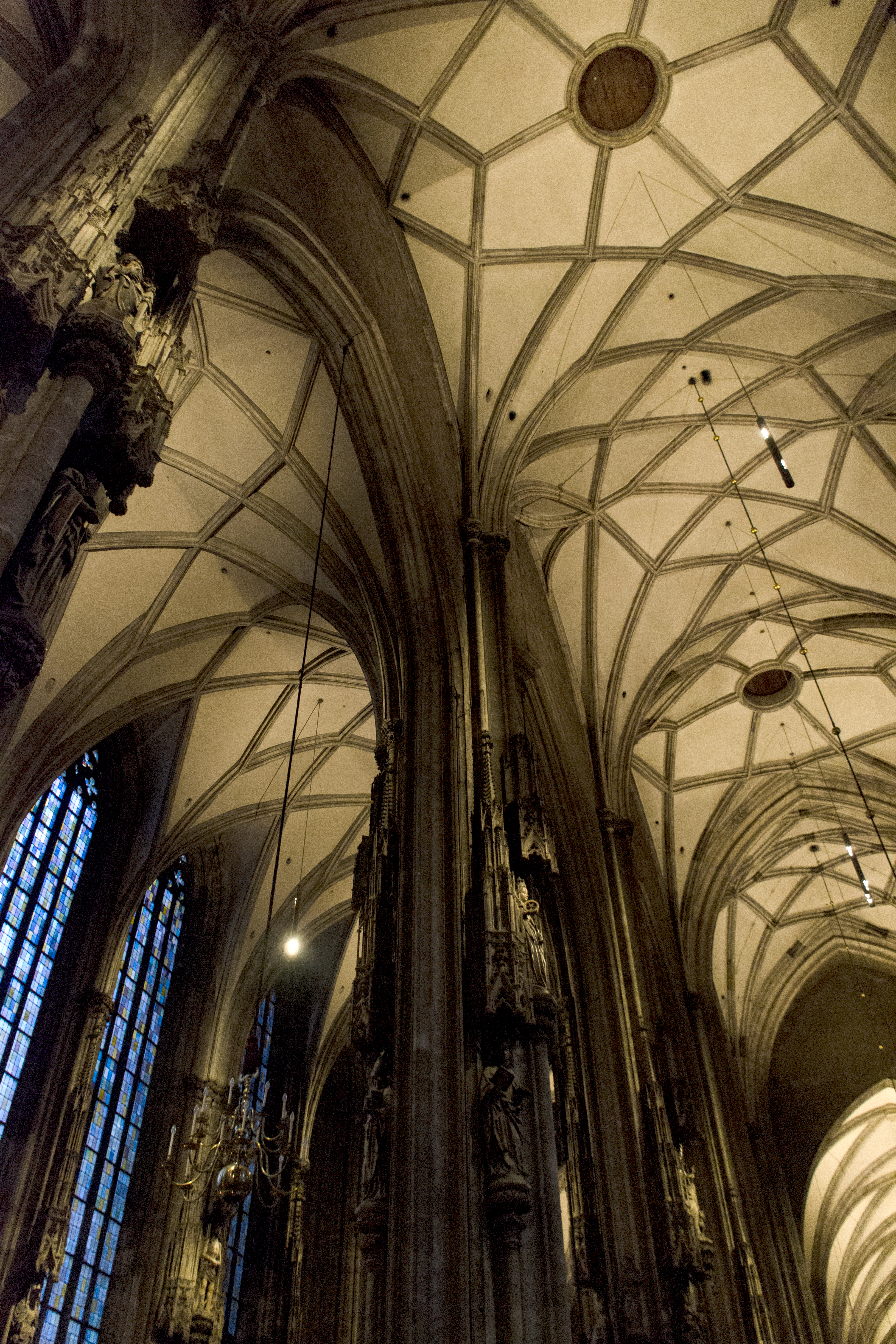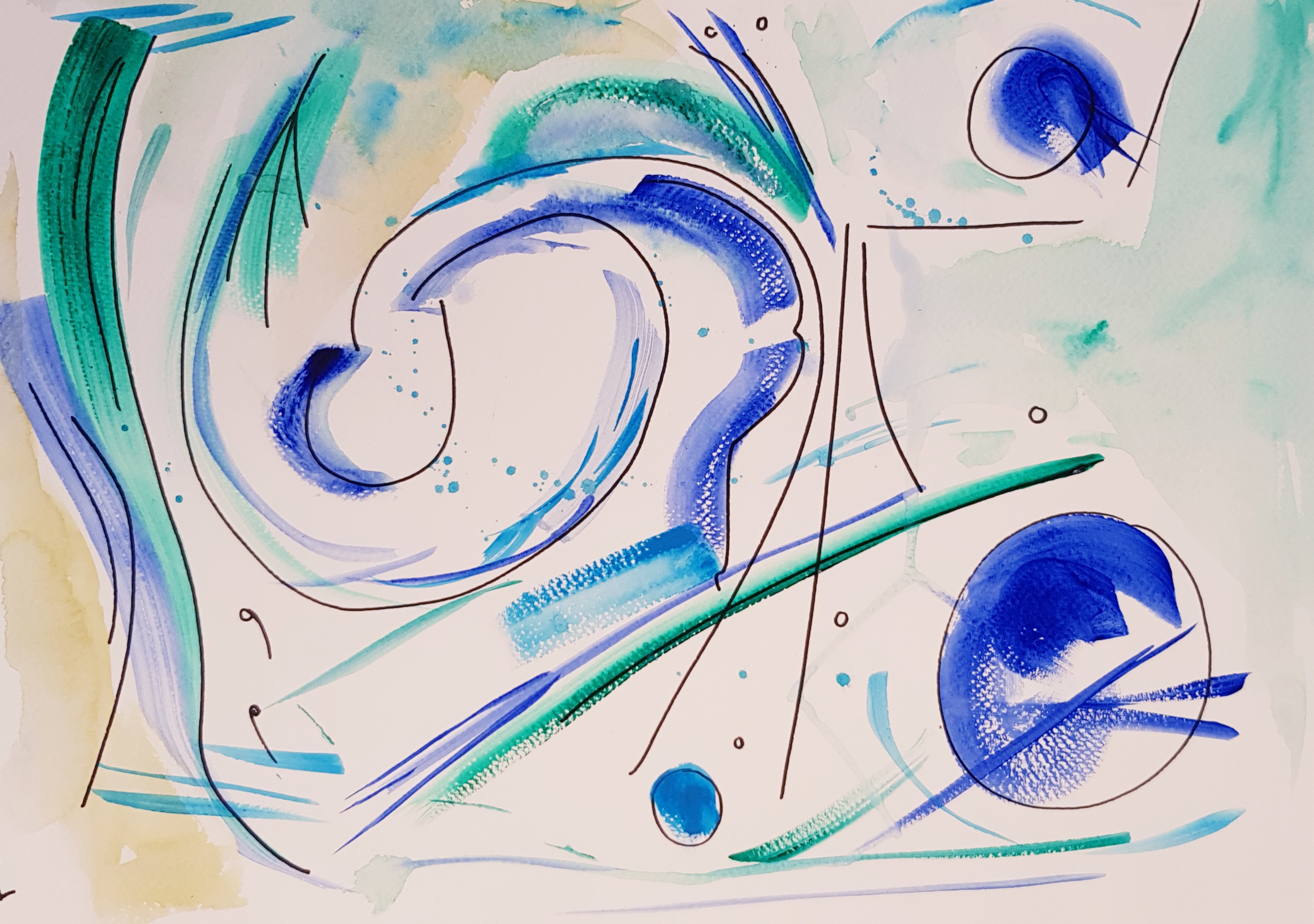
This morning I intended to get up nice and early so Ashis could teach me proper Indian yoga. He had explained it all to me the night before, but we had yet to have a physical run through. Yoga is best in the early morning, and Ashis is an earlier riser than me – it seems the country is, actually! In the UK it’s usual to sleep until a time the Indians would consider late (7.30/8am), perhaps due to the cold, grey weather making it far less attractive to get out of bed. 8am is usually considered a reasonable time to get up, but 9 or even 10 is perfectly acceptable. Over here the bustle of life outside begins permeating my windows at around 6.30am, but this morning I had to go back to sleep, a situation I blame entirely on the mosquitos who had kept me awake half the night buzzing my ear. I have been bitten alive by mosquitos since I arrived. I knew it would happen, the gnats at home cover me in bites each summer. I must have tasty blood. The mosquitos have delighted in a fresh blood bank to drink from and have taken a liking to my forehead of all places. Around 10 bites now cover my face, with more on my feet, arms etc. I’ve become paranoid about getting bitten even more, so during the night when I heard that ominous bzzzzz in my ear, I awoke ready for battle. But they are extremely crafty, and being small and almost transparent, camouflage against almost everything. I spent an hour trying to catch it, then gave up and went back to bed. As soon as I turned the light off and laid down my head – bzzzzzz in my ear. They’re trying to drive me mad, I thought – and succeeding. I imagined I could see them smirking as they teased me incessantly, knowing they had the advantage against my comparatively sluggish attempts to quash them.
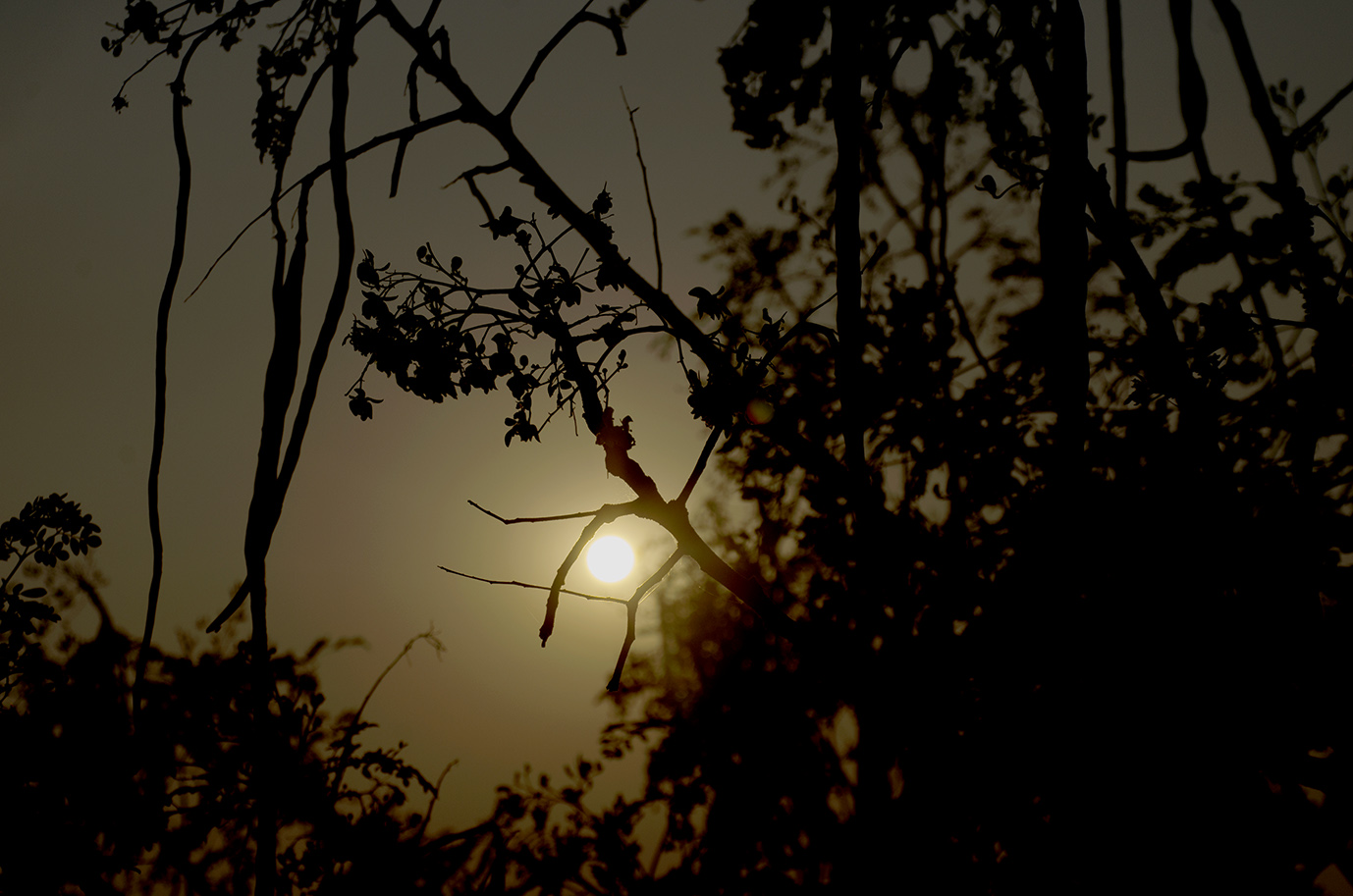
So, tired and grumpy, I postponed yoga until tomorrow. Ashis went out and brought back breakfast from a local street stall – a thin red liquid curry sauce, with steamed white dumplings called Idli. They are fluffy and fairly bland, so you dip them in the curry sauce. The sauce (Ghuguni) is packed with flavour and perfect with the Idli, but almost surpassed my meagre spice limit! I had to eat it very slowly in between gulps of water and hope that my stomach didn’t complain later…
After breakfast I went to get dressed, deciding to up my game a bit after visiting the slums and seeing how beautifully dressed the women are, with their jewellery and brightly coloured saris. My plain face and clothes looked drab in comparison, so on went some jewellery and a little make up to hide my spotty face.
As I went to open the window and let some of the beautiful warm Indian breeze into the room, I came face to face with a lizard. Now, not being a regular traveller, this was somewhat of a shock to my system. A mini dinosaur…in my room…with me…all night… I told Ashis, who replied oh yes, we call them Laxmi. They eat the bugs and spiders, they won’t come near you. Also, if you are saying something and you hear them make their clicking noise, it means you are speaking the truth. Hmm, OK, I replied, smiling hesitantly. After returning to my room and re-introducing myself to what appeared to be my unexpected new roommate, I decided I would call him Brian. My dad was called Brian and passed away 3 years ago. I have felt a strong sense of him with me on this trip, particularly as he was from the west indies, and many of the cultural elements cross over with his and my uncle’s colloquialisms from growing up there. So, me and Brian are now on great terms, I chat to him and say hi when I come in and he is less inclined to run away from me now he realises I’m friend not foe.
I spent my day making some paintings, editing my photos and writing the blog. I also managed to get in some meditating and reading, what bliss! I will do a post specifically on the art I have made here after the diary entries, but if you visit my Instagram page / kate.withstandley you can see most of the work on there in the meantime.
At about 5pm we ventured out in a cab to the Tribal Festival, my first visit to the city! What craziness. I cannot imagine what the bigger cities are like – Mumbai, Delhi etc. I am struggling to envisage anything crazier than Bhubaneswar, although I know this is in fact tame in comparison to cities like Mumbai, with their populations of 30million+. I was skittish as we crossed the road, hesitating, then jumping back as vehicles of all kinds rushed past. Ashis just stepped out and crossed, with the vehicles swerving round him or slowing to let him go. They beeped, but then everyone beeps, for every reason, so it’s hard to know if he was doing something wrong, or not. When I found it impossible to follow – all my instincts telling me not to walk out in front of fast-moving vehicles – he came back and took my hand to lead me over. I felt a bit silly but reminded myself this is only my 3rd day in India – I need some time to adapt!
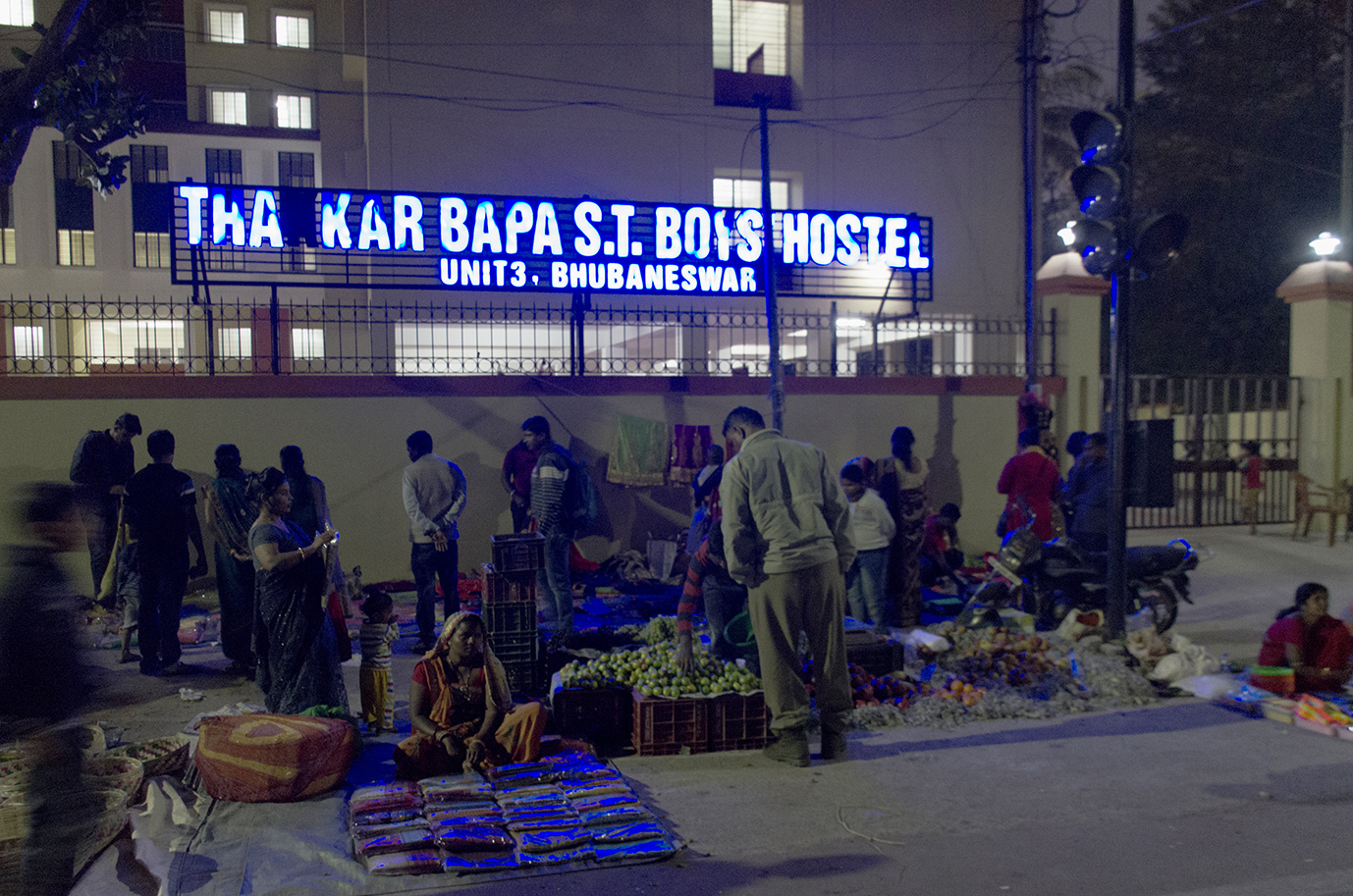
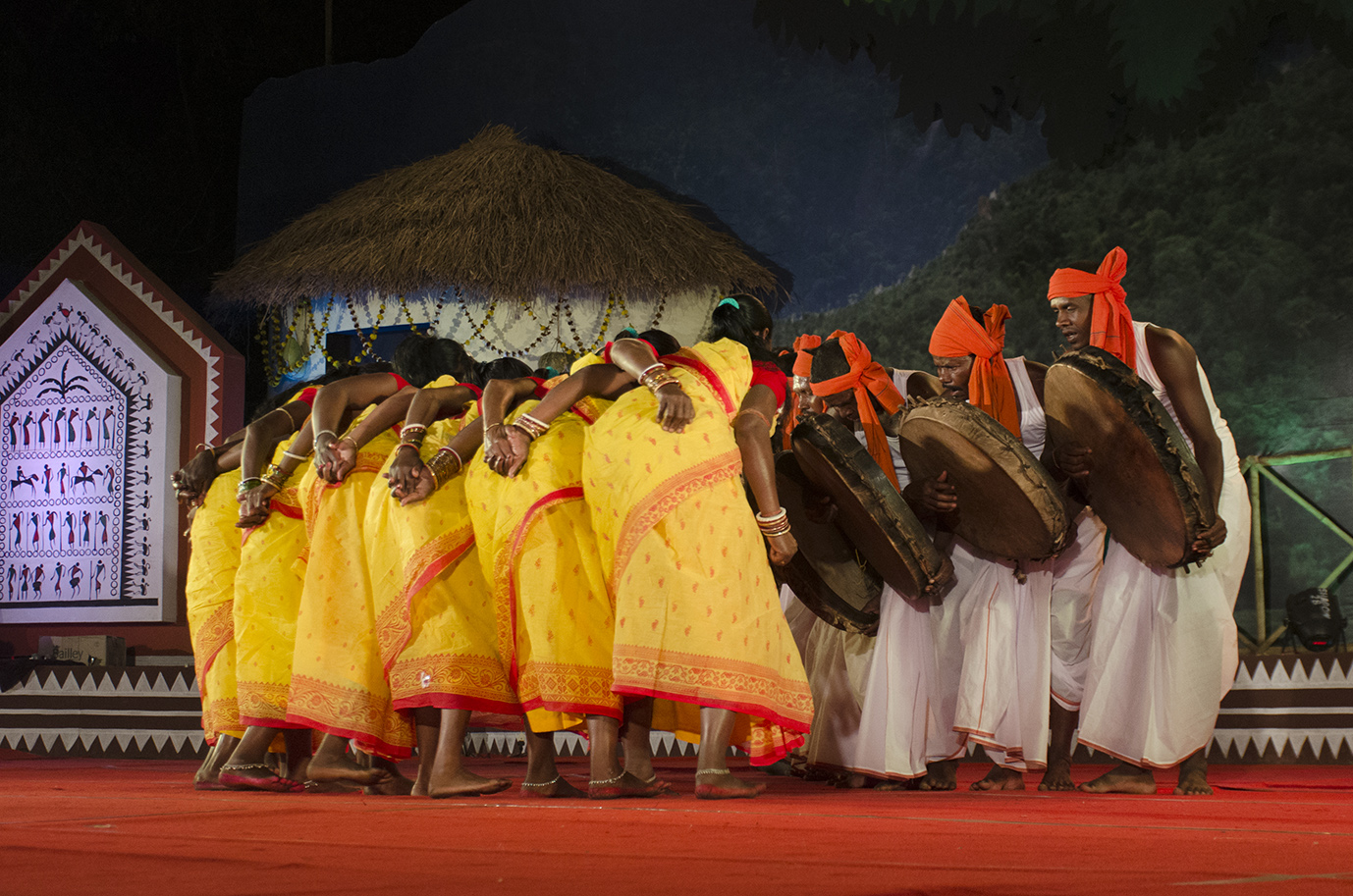
The Tribal Festival was fascinating – there are 63 active tribes in Odisha alone. These tribes still follow the same lifestyle and traditions which they have done for thousands of years. There are modern additions, obviously, but the generations pass down the skills and cultural structures of each tribe and these continue to be preserved in the younger generation. Some are more advanced than others, while some still subscribe to a wonderfully simple lifestyle, relying on agriculture and growing their own crops. Almost all still make their own clothes, jewellery, and various living implements, from bamboo and other materials which grow nearby. At the fair each tribe has created a mock up of their style of house and there are clearly significant differences in culture, architecture and style depending on the tribe and the region in which they are based.
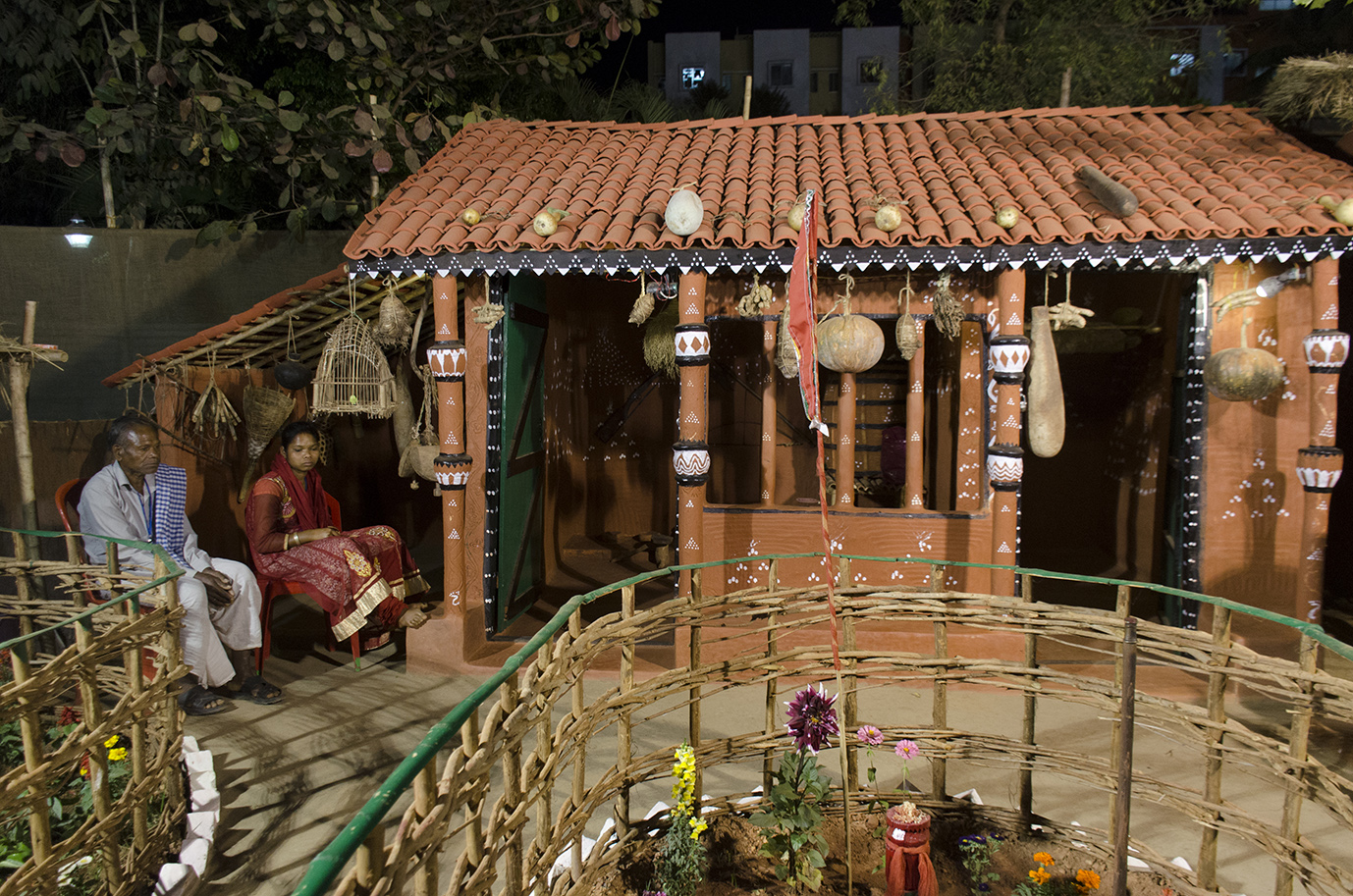
A large stage sat in the centre of the festival, on which groups of dancers from each tribe performed their ritual dances in stunning outfits and with delight. The dances were spectacular and hypnotic, their drums and chants causing time to slip away as you become absorbed. Watching is difficult though, as the urge to dance is infectious; the rhythm is universal and primal, speaking to something deep inside you which was lost a long time ago. A connection to the earth and to each other which we in the West abandoned generations before now.
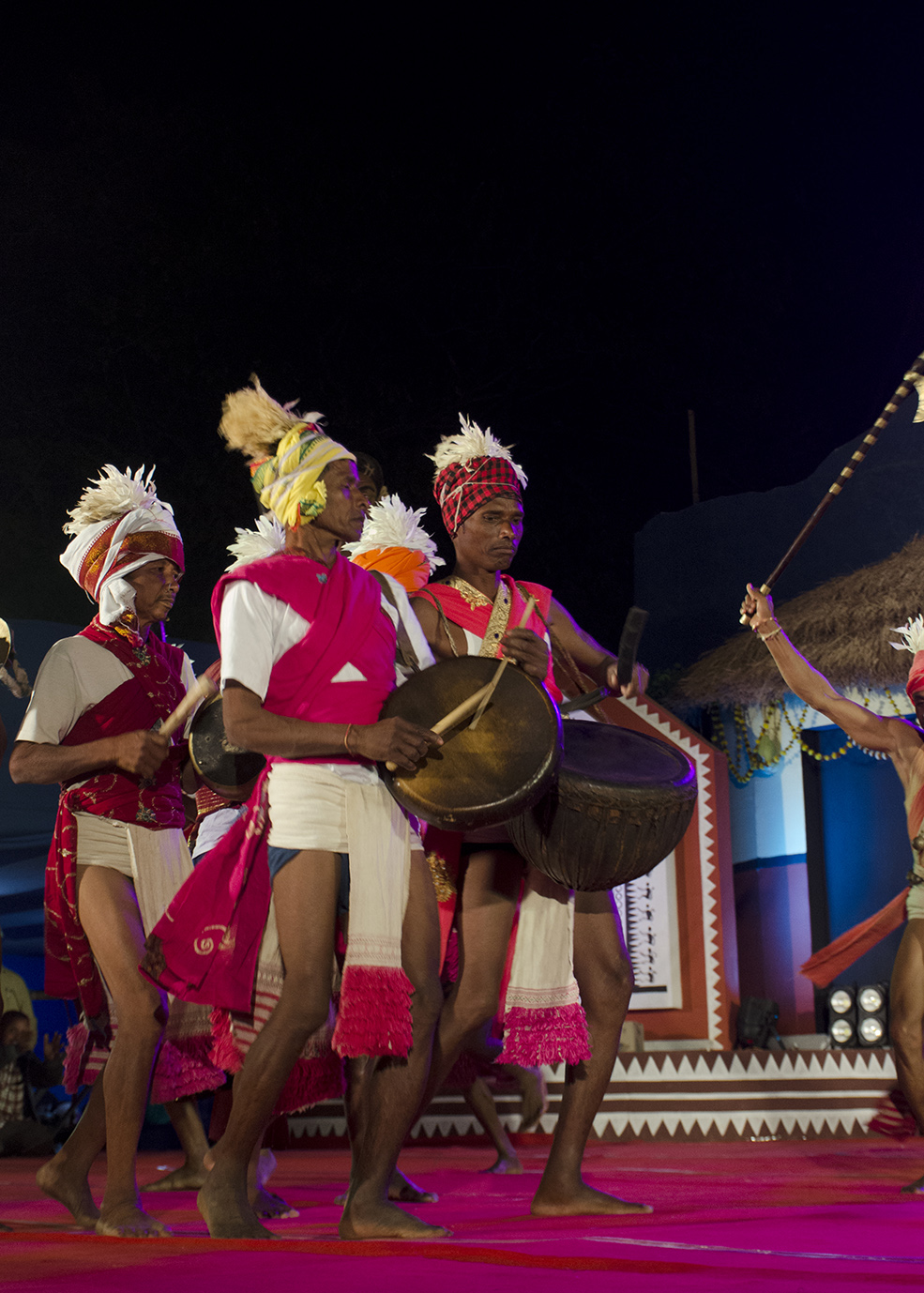
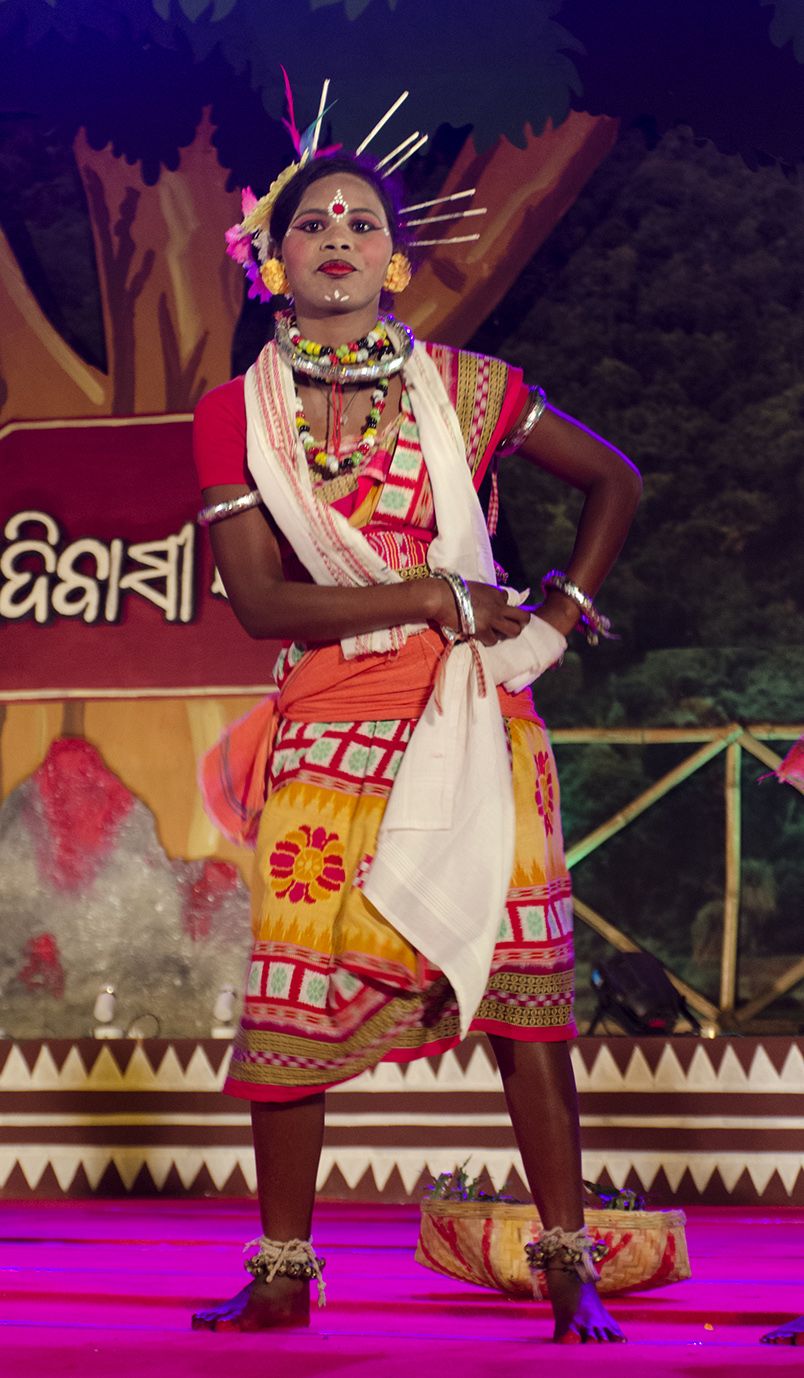

We dragged ourselves away from the dancing and went to explore the stalls. I hadn’t intended on buying much, this trip was mainly about art and experience, not shopping, but with the products on offer so beautiful and handmade (and of course cheap) I just couldn’t resist. I stopped looking at the jewellery stalls after a while, or I would have bought far too much! We happened upon a stall where they were selling tribal flutes. Being a (very amateur) flautist myself, I was drawn to these and Ashis asked the man to demonstrate. The construction of the flute was at once simple and complex, a piece of wood with holes, connected to a round wooden bung at the end with a piece of string around the metal mouthpiece. It seemed as though the bung had to be wet, and the string perfectly placed in proximity to the mouth and the metal, to be able to produce a sound. The sound itself was halfway between flute and trumpet, piercing in volume and epitomising the sound of the East. Ashis tried numerous times and finally succeeded in producing a sound, but his attempts to bargain with the man on price were in vain – mainly because of my presence, but also because it was clear he really liked it and being a local, he wasn’t prepared to pay over the odds, as I would have been. Next came a stall with stunning reed mats of all types, sizes, colours and shapes. I spotted a yoga mat with matching carry bag, but when they said 600 rupees I baulked. Until now everything had been 100/200, and I politely said no. It wasn’t until later when I got home and worked out the conversion that I realised this was about £6.50, and I kicked myself for not buying that beautiful mat.
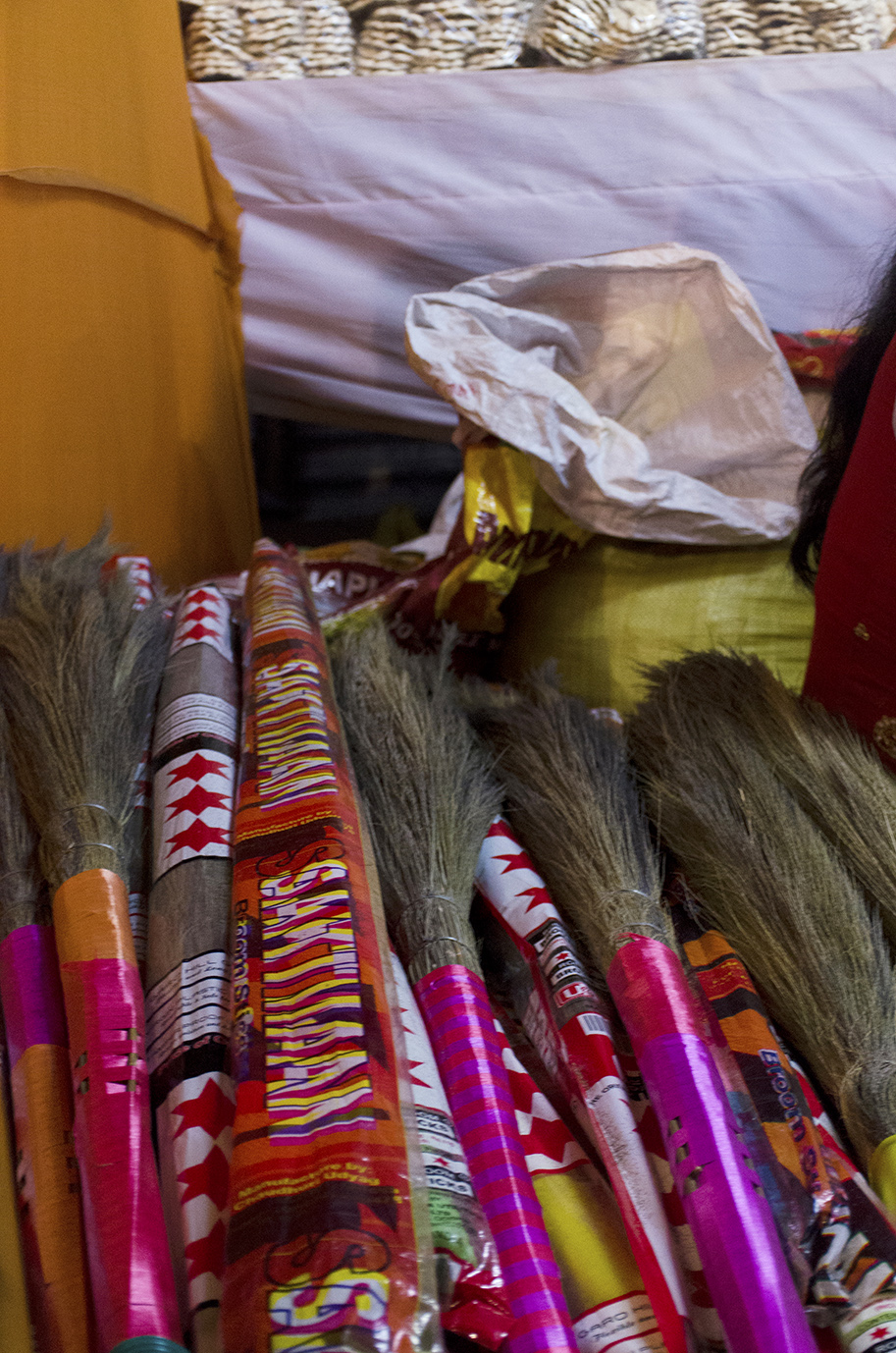
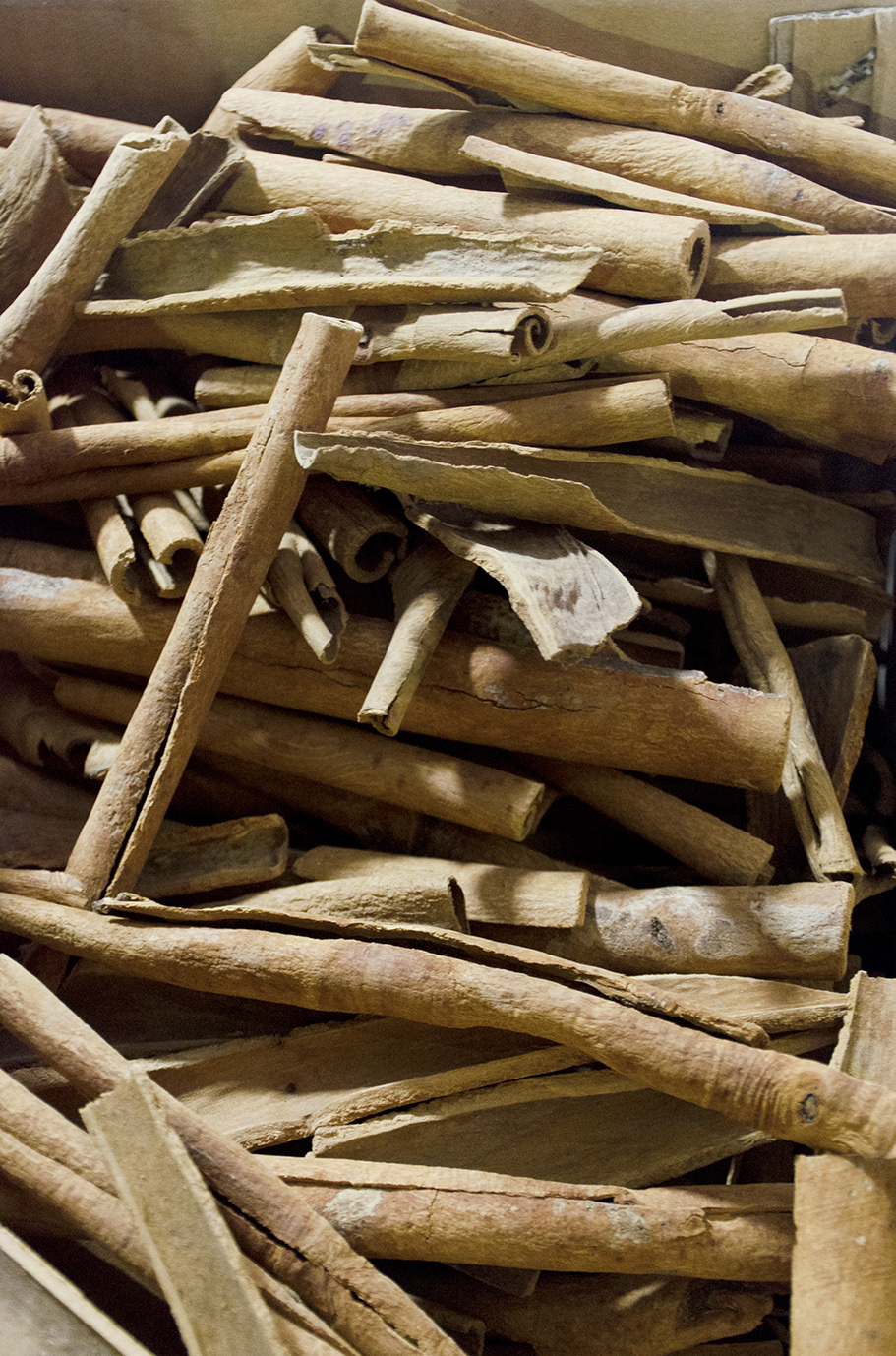
On the way back, we stopped at a kiosk to try some freshly made juice. As we waited, I became distracted by what appeared to be an Indian soap opera. At first it seemed completely over the top, similar to American soap operas, with long dramatic pauses focusing on someone’s stricken face, then as I continued to watch it became increasingly dramatic, concluding with a woman drenching herself in cold water in some sort of penance for something, while her daughter watched and sobbed. I became completely absorbed in trying to decipher what was going on and interestingly was still able to be drawn by the TV show, despite the vast gap in language and culture. Along came my pineapple juice, which was delicious, but I was then asked if I wanted ‘salt’. I instinctively said no, but Ashis thought I should try it as it is generally what Indians add to their sweet drinks such as juice and Lassi (yohgurt drink). What he added was not normal salt, but some very strange addition which did not work for me at all. Next time, no salt.
Tomorrow we are off to see the Jaina Khandagiri Caves…

